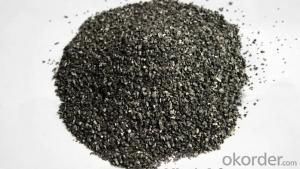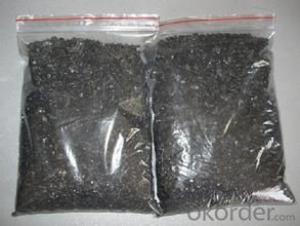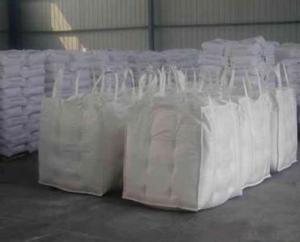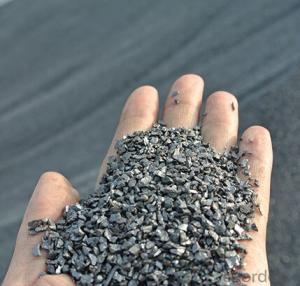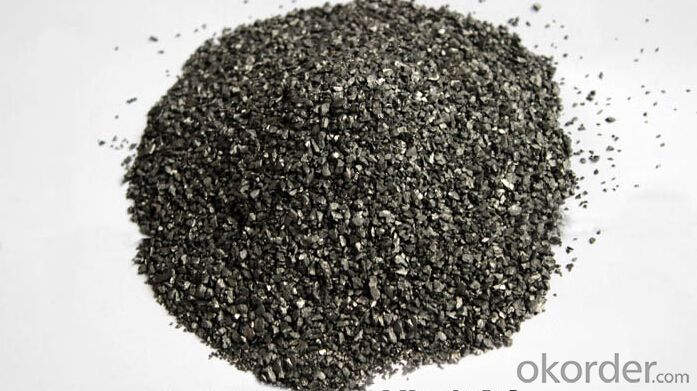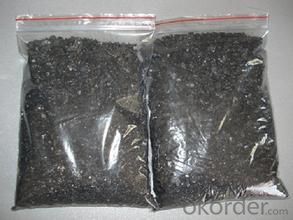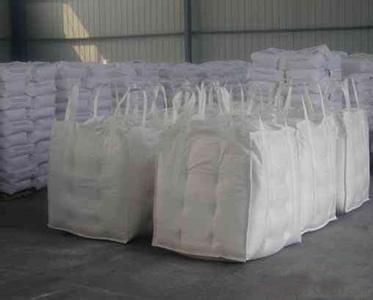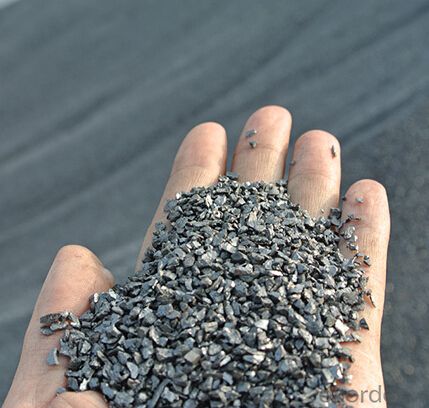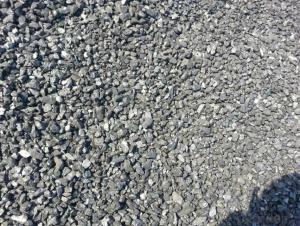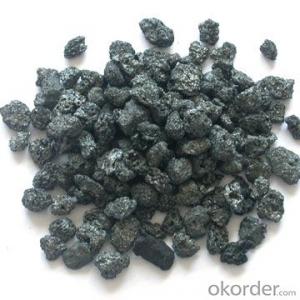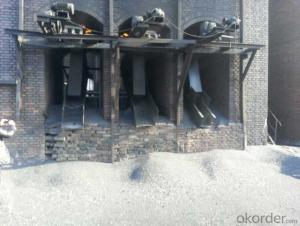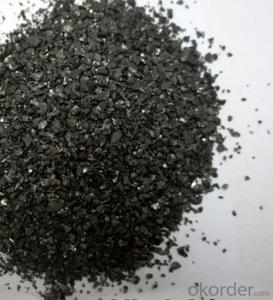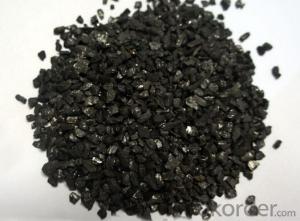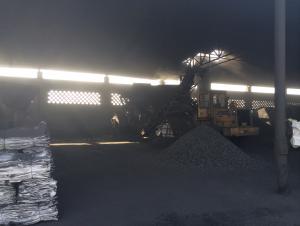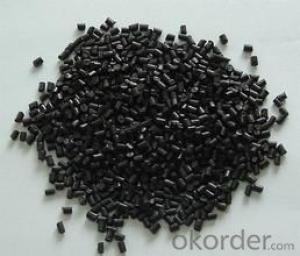Recarburizer 1-3MM 93% FC Carburant Carbon Additives
- Loading Port:
- Qingdao
- Payment Terms:
- TT OR LC
- Min Order Qty:
- 10 m.t.
- Supply Capability:
- 50000 m.t./month
OKorder Service Pledge
OKorder Financial Service
You Might Also Like
Specifications Of Recarburizer 93% FC
- High C content;
- Low S and N content;
- High abosorbility;
Recarburizer(Carburant, carbon additives) with high quality, 0-20mm for metal casting foundry and steel plant, low nitrogen content and high carbon content, min 90% carbon content, at the same time as your requirements with no problem. The best media for adding carbon.
Technical Data Sheet of Recarburizer 93% FC
Fixed carbon | ≥ 93% |
Ash content | ≤ 5.0% |
Vol . Matter | ≤ 1.0% |
Sulphur content | ≤ 0.3% |
Moisture content | ≤ 0.3% |
Size | 0-20mm or as your requirement. |
Packing | - 25kg bag - One tone bags, Jumbo bag |
Delivery time | In 5-10 working days or depends on the order quantity |
Supply ability | 50000 Metric Ton Per Month |
Payment terms | L/C at sight or T/T |
Available Size: 0,1-4mm, 1-5mm, 3-8mm, 8-20mm (as per customers’ requirements)
Usage: widely used in casting foundry, steel-making, metallurgical Etc.
Applications of Recarburizer 93% FC
Mainly used in steel making in electrical stove, screening water, ship building sandblast to remove rust,producing carbon materials Etc.
Characteristics of Recarburizer 93% FC
- Particle size, porosity, absorption speed stable
- High degree of carbonize product, increase the original nuclear capability in the shape of liquid iron.
- Increased in the inoclation of nodular cast iron ball ink quantiyt, increase in th electric furnace iron graphit crystal nucleus.
- Excellent performance, stable.

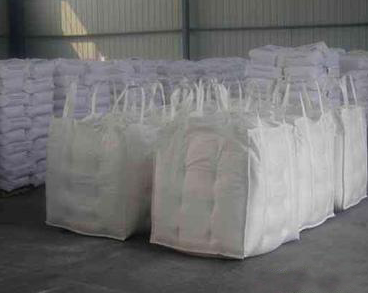
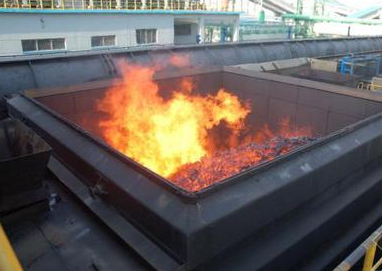
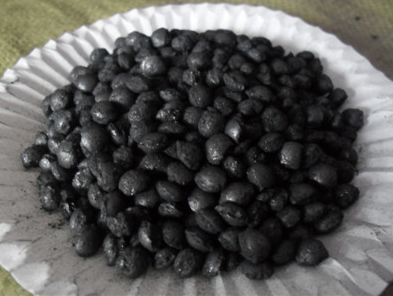
- Q: How does carbon contribute to the strength of concrete?
- There are several ways in which carbon can contribute to the strength of concrete. One primary method involves the utilization of carbon nanotubes (CNTs) or carbon fibers. These substances are added to the concrete mixture to act as reinforcement and enhance its mechanical properties. Incorporating CNTs or carbon fibers into the concrete results in the formation of a network consisting of small, sturdy, and lightweight particles. This network serves to enhance the overall strength and durability of the concrete, making it more resistant to cracking, flexing, and other types of structural damage. Furthermore, the carbon particles also improve the bonding between the cement paste and the aggregates in the concrete. This improved bonding increases the strength at the interface, resulting in a more cohesive and robust concrete matrix. Moreover, carbon can also contribute to the strength of concrete by acting as a pozzolan. Pozzolans are materials that undergo a chemical reaction with calcium hydroxide, a byproduct of cement hydration, to form additional cementitious compounds. These compounds fill in the gaps between cement particles, leading to a denser and stronger concrete structure. Carbon black, which is a finely divided form of carbon, is commonly used as a pozzolan in concrete mixtures. Overall, the incorporation of carbon in concrete, whether through carbon nanotubes, carbon fibers, or as a pozzolan, can significantly enhance its strength and performance. By reinforcing the concrete matrix, improving bonding, and filling in gaps, carbon helps create a more durable and robust material suitable for various construction applications.
- Q: How does carbon impact the availability of clean transportation?
- Carbon impacts the availability of clean transportation through its contribution to greenhouse gas emissions. Carbon dioxide (CO2) is a major greenhouse gas responsible for climate change, and the burning of fossil fuels in traditional transportation systems releases significant amounts of CO2 into the atmosphere. This has led to the urgent need for cleaner alternatives in the transportation sector. Clean transportation options, such as electric vehicles (EVs) and hydrogen fuel cell vehicles, are designed to minimize carbon emissions. By utilizing electricity or hydrogen as the primary source of energy, these vehicles produce zero tailpipe emissions, significantly reducing the carbon footprint associated with transportation. However, the availability and adoption of these clean transportation solutions are directly impacted by carbon-related factors. One key factor is the energy infrastructure required to support clean transportation. Electric vehicles, for example, rely on charging stations and a reliable power grid. The production of clean electricity from renewable sources, such as solar and wind, is crucial to ensure that EVs are truly emission-free. Therefore, the carbon intensity of the electricity grid plays a vital role in determining the environmental impact of electric transportation. Furthermore, the availability of carbon-neutral fuels is another important aspect. Hydrogen fuel cell vehicles, which convert hydrogen into electricity to power the vehicle, require a readily available and sustainable source of hydrogen. Currently, most hydrogen is produced from natural gas, which generates CO2 emissions during the production process. However, advancements in technologies like electrolysis, which uses renewable electricity to split water into hydrogen and oxygen, are paving the way for carbon-free hydrogen production. Additionally, carbon pricing and policies also impact the availability of clean transportation. By putting a price on carbon emissions, governments and organizations incentivize the adoption of low-carbon transportation options. This can lead to increased investment in clean transportation infrastructure, research, and development, ultimately driving the availability and affordability of clean transportation solutions. In conclusion, carbon emissions from traditional transportation systems have necessitated the development and availability of clean transportation alternatives. Factors such as the energy infrastructure, availability of carbon-neutral fuels, and supportive policies all influence the availability and accessibility of clean transportation. By addressing carbon impacts, we can accelerate the transition to a more sustainable and environmentally-friendly transportation system.
- Q: How can individuals reduce their carbon footprint?
- Individuals can reduce their carbon footprint by adopting sustainable lifestyle choices such as conserving energy, using public transportation or carpooling, eating a plant-based diet, reducing waste, and supporting renewable energy sources. Additionally, individuals can also make a difference by planting trees, supporting eco-friendly products, and spreading awareness about climate change.
- Q: They include a cementite, two cementite, three cementite, eutectic cementite and eutectoid cementite, and compare their temperature, composition and morphology
- A: cementite in iron graphite phase, carbon content more than 4.3%, in L (Fe + Fe3C) two-phase region crystallization of Fe3C as a primary cementite formation temperature in the eutectic temperature (1148 DEG C) above, morphology in large sheets (during eutectic organization). Carbon content from 4.3% to 6.69% is the typical composition range.
- Q: When is gold resistance better? When will carbon resistance be better?
- Metal film resistance, high precision, overload capacity, high temperature coefficient, but the price is also higher. Commonly used in some demanding or more accurate circuit, such as instrumentation, precision power supply. Carbon film resistors have high cost performance and low cost, but they have larger errors. A large number of applications in civil electrical products. Such as television, air conditioning, stereo and so on.
- Q: How does carbon impact the pH balance of oceans?
- Ocean acidification is caused by the absorption of carbon dioxide (CO2) released into the atmosphere by the oceans. This absorption leads to an increase in the acidity of the water, as the CO2 reacts with seawater to form carbonic acid. The carbonic acid then releases hydrogen ions, which further contribute to the acidity of the water. The increased acidity of the oceans has harmful consequences for marine life and ecosystems. Many marine organisms, including coral reefs, shellfish, and phytoplankton, rely on calcium carbonate to create their shells and skeletons. However, in more acidic waters, the availability of calcium carbonate decreases, making it difficult for these organisms to maintain their structures. This can result in weakened shells, stunted growth, and even death. Ocean acidification also affects the reproductive and physiological processes of marine organisms. For instance, it can interfere with the development of fish larvae and disrupt the ability of certain species to detect predators or locate food. Moreover, the increased acidity can harm the organisms that rely on these species for sustenance, thus causing a ripple effect throughout the food chain. Additionally, ocean acidification can have a profound impact on the overall health and functioning of marine ecosystems. Coral reefs, often referred to as the "rainforests of the sea," serve as habitats for a wide range of marine species. However, as the acidity of the oceans rises, coral reefs become more susceptible to bleaching and ultimately dying off. This loss of coral reefs would result in catastrophic consequences for the biodiversity and productivity of marine ecosystems. To summarize, the rise in atmospheric carbon dioxide levels leads to the absorption of CO2 by the oceans, resulting in ocean acidification. This process disturbs the pH balance of the oceans, making them more acidic. The increased acidity has detrimental effects on marine life, including the ability of organisms to build their structures, reproduce, and function within their ecosystems. It is imperative to address the issue of carbon emissions in order to mitigate the negative impacts of carbon on the pH balance of oceans and safeguard the health and integrity of marine ecosystems.
- Q: What is carbon fiber reinforced plastic?
- Carbon fiber reinforced plastic (CFRP) is a composite material made by combining carbon fibers with a polymer matrix, typically epoxy resin. It is known for its exceptional strength-to-weight ratio, making it a lightweight alternative to traditional materials like steel and aluminum. The carbon fibers provide the material with high tensile strength and stiffness, while the polymer matrix helps to distribute the load and provide durability. The manufacturing process of CFRP involves layering carbon fiber sheets or fabrics and impregnating them with the polymer resin. This combination is then cured under high temperature and pressure to create a solid and rigid structure. The resulting material is incredibly strong, yet significantly lighter than other materials of similar strength, such as steel. CFRP finds numerous applications across various industries due to its unique properties. It is commonly used in aerospace and automotive sectors to reduce the weight of components and improve fuel efficiency. Additionally, it is used in sports equipment, such as bicycles, tennis rackets, and golf clubs, as it allows for better performance and maneuverability. CFRP is also utilized in construction, where its high strength and resistance to corrosion make it suitable for reinforcing structures like bridges and buildings. Overall, carbon fiber reinforced plastic is a versatile and high-performance material that combines the strength of carbon fibers with the flexibility of a polymer matrix. Its lightweight nature and exceptional mechanical properties make it a popular choice across industries where strength, weight reduction, and durability are crucial factors.
- Q: Isotopes of carbon
- First, 14C dating method14C is the nature of the cosmic rays and atmospheric nitrogen produced by nuclear reactions. The carbon -14 not only exists in the atmosphere, with the absorption and metabolism of the organism, through the food chain into animal or human living organisms. All because of carbon in the generation side and the -14 side, at a constant rate decay, resulting in carbon -14 in nature (including all organisms) ratio and the content of carbon stable isotope -12 content remained unchanged.When the organism dies, due to the decay of carbon The new supersedes the old. stop, the decrease of -14, so the relative ratio of -14 and -12 in carbon carbon content corresponding decrease. By determination of biological fossils unearthed in the medium carbon -14 and carbon content of -12, can accurately calculate the death of the organisms (i.e. survival) in a given organism unearthed. For example the fossil, M grams of carbon (or carbon determination of the quality of -12), according to the relative ratio of various carbon isotope content of nature can be calculated, the organism is alive, the quality of carbon -14 should be m grams. But the actual measured carbon quality of -14 only m grams of 1/8, according to the half-life the biological death has been 3 for 5730 years, has been dead for seventeen thousand two hundred and ninety years. The United States radiochemist W.F. Libby has invented the method of radioactive dating, made outstanding contributions to Archaeology He was awarded the Nobel prize for chemistry in 1960Because of the very low carbon content of -14, and the half-life is very long, so -14 can accurately measure the carbon 5 to within 60 thousand years of the unearthed cultural relics, for older unearthed cultural relics, such as living in five hundred thousand years ago, Zhoukoudian Beijing man, using carbon -14 dating method is not determined to.
- Q: Who can explain that bare feet on fire carbon don't burn feet?
- These two substances are edible, containing in the mouth is naturally very safe, plus cinnabar is red, and dissolve it in the water, this red holy water is more mysterious.From time to time to the fire scattered in the "law" law of water spray powder "and" add before have feet soaking in full dissolution of cinnabar and borax "holy water", which is on the fire and carbon between your feet to form a thin protective layer of "sand", which has scientific significance, is is that all the fairies and the real reason for lossless hair or.The world is material. A scholar once said, "what is a ghost?" Some phenomena that cannot be explained by science are ghosts in our hearts. If we can continue to search in the way of science, ghosts will leave us!
- Q: Learn photography for nearly half a year, has always wanted to buy a tripod, want to buy carbon fiber tripod, what brand is better? The machine is D700+24-70About 3000 is too expensive ~ consider 1000 more just fine. Wage earners!
- Three tripod according to the budget to choose the brand, Nikon D700 SLR camera lens with the weight of 24-70 does not have what problem, maximum diameter of 28mm on the line.If the budget is around 7000 only buy JX, may also consider the budget nearly manfrotto.If the budget is below 3000, recommended to choose the source or berno.Budget 1000 yuan level, do not have to consider carbon fiber, and this carbon fiber three tripod does not necessarily fly.
Send your message to us
Recarburizer 1-3MM 93% FC Carburant Carbon Additives
- Loading Port:
- Qingdao
- Payment Terms:
- TT OR LC
- Min Order Qty:
- 10 m.t.
- Supply Capability:
- 50000 m.t./month
OKorder Service Pledge
OKorder Financial Service
Similar products
Hot products
Hot Searches
Related keywords
